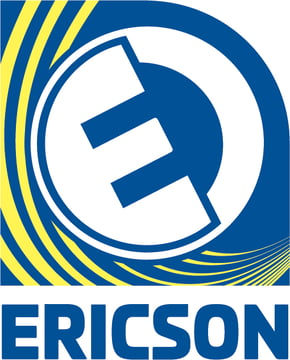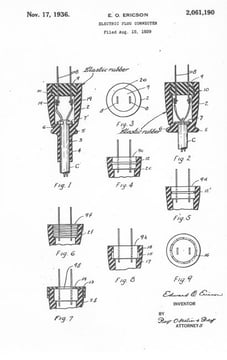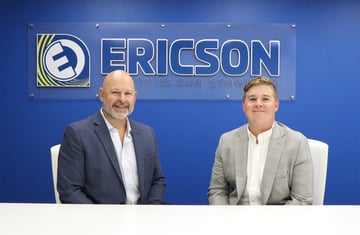A skilled and engaged workforce is paramount to your company’s success. Investing in employee training goes beyond simply teaching a task; it fosters a culture of learning, increases productivity, improves overall safety, and empowers employees to contribute meaningfully to your organization's goals.
This guide delves into six best practices for developing impactful manufacturing training programs that you can use when building out training strategies for your employees.
1. Bridging the Knowledge Gap: From "How" to "Why"
Manufacturing processes often involve a complex sequence of tasks. While teaching employees how to perform these tasks is essential, it's equally important to equip them with the why behind them. This bigger picture approach paints a clear picture of how each individual's role contributes to the company's overall success.
Sharing company goals, production targets, and the significance of quality control fosters a sense of ownership and accountability. When employees understand how their work directly impacts the final product, they're more likely to be engaged, motivated, and proactive in problem-solving.
2. Consistency Is the Cornerstone of Effective Training

Imagine a new employee receiving conflicting instructions from different colleagues on how to operate a machine. This inconsistency in manufacturing training programs can lead to confusion, errors, and ultimately, decreased productivity. To ensure everyone receives the same message, it's crucial to develop standardized training materials accessible across all departments.
Utilizing experienced employees as on-the-job trainers can be a valuable resource. Encourage them to document the training process step-by-step, including safety protocols, troubleshooting tips, and best practices. This documentation serves as a consistent reference point for both trainees and trainers alike, minimizing the risk of conflicting information being disseminated.
3. Continuous Feedback: A Learning Loop for Success
Employee feedback is a vital cog in developing successful manufacturing training programs. After a training session, solicit feedback from participants through surveys, focus groups, or anonymous suggestion boxes. This feedback provides valuable insights into employee perspectives on the training's effectiveness, their preferred learning styles, and areas that could be improved. Analyzing this data helps tailor future training sessions to better address employee needs and preferences.
Furthermore, soliciting feedback demonstrates to employees that their opinions are valued. When they see their suggestions incorporated into future training programs, it reinforces a sense of ownership and engagement in the learning process.
4. Hands-On Learning To Utilize the Power of Practice
Although theoretical knowledge is still important, mastering a skill ultimately requires practical application. Hands-on training sessions allow employees to put their newfound knowledge to the test in a safe and controlled environment. This approach provides opportunities to practice procedures, identify potential challenges, and develop problem-solving skills.
Role-playing scenarios can be particularly valuable for simulating real-world situations, allowing employees to practice communication skills, conflict resolution techniques, and decision-making processes. Hands-on training fosters increased confidence and reduces apprehension, ensuring a smooth transition from the training environment to the production line.
5. Interactive Engagement Keeps Learning Interesting
Learning should be an engaging and interactive experience, not a monotonous lecture. Traditional classroom-style training can quickly become dull and lead to disengagement. Injecting a dose of interactivity can breathe life into training sessions and keep employee attention focused when conducting a manufacturing training program.
Brainstorming sessions, group discussions, and problem-solving activities encourage participation, critical thinking, and collaboration. Integrating real-world manufacturing scenarios provides context and allows employees to see the direct application of the knowledge being taught.
Consider incorporating gamified elements or interactive quizzes to make learning fun and engaging. Positive reinforcement through incentives like small prizes or team-building activities can further encourage active participation.
6. Preparation Is Key to Setting the Stage for Success
Effective training begins even before the first session. Trainers themselves should be well-prepared and comfortable with the content being delivered. Practicing the presentation beforehand ensures a smooth flow and a confident delivery. Respecting the time of employees by starting and ending sessions on time demonstrates professionalism and organization.
Developing clear and concise training materials, including handouts or cheat sheets, allows employees to reference key points after the session. Visual aids like diagrams, video demonstrations, and flowcharts can be particularly helpful for employees who learn best visually.
Investing in Your Workforce
By following these six key strategies, your company can create impactful manufacturing training programs that engage employees, cultivate a culture of continuous learning, and ultimately drive long-term success. Remember, investing in your workforce is an investment in your company's future. Empowered and knowledgeable employees are more productive, more engaged, and more likely to be loyal contributors to your organization's success.
To learn more, reach out to the Ericson team today.
Tag(s):
News
Katsie O'Neill
Katsie is the Human Resources Manager for Ericson Manufacturing. She is a SHRM Certified Professional (SHRM-CP) with over 15 years of progressive experience in the HR field. Katsie has a passion for people and helping push them reach their greatest potential.
More from the blog
View All Posts
Workplace Safety
2 min read
| June 12, 2018
Time for a Change: Our New Logo
Read More
Workplace Safety
4 min read
| May 16, 2017
How Ericson’s Industrial Wiring Device Innovations Revolutionized Electrical Safety
Read More
News
2 min read
| October 8, 2025
Ericson Announces Expansion, 4th Generation Family Ownership
Read MoreSubscribe to blog updates
Stay up-to-date on what's happening at this blog and get additional content about the benefits of subscribing.
